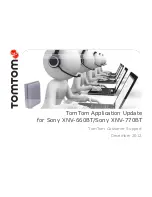
58
Chapter 4. Red Hat Network Website
•
To apply a specific Errata Update to one or more Enterprise-level systems, find the update within
the Errata lists or by searching. In the table, click on the number of systems affected, which will
take you to the
Affected Systems
tab of the
Errata Details
page. Then, individually select the
systems to be updated and click the
Apply Errata
button. Double-check the systems to be updated
on the confirmation page, then click the
Confirm
button.
•
To apply more than one Errata Update to one or more systems, select the systems from a
Systems
list and click the
Update List
button. Click the
System Set Manager
link in the left navigation
bar, then click the
Systems
tab. After ensuring the appropriate systems are selected, click the
Er-
rata
tab, select the Errata Updates to apply, and click the
Apply Errata
button. You can select to
apply the Errata as soon as possible (the next time the Red Hat Network Daemon on the client sys-
tems connect to RHN) or schedule a date and time for the Errata Updates to occur. Then click the
Schedule Updates
button. You can follow the progress of the Errata Updates through the
Pending
Actions
list. Refer to Section 4.7
Schedule
for more details.
Important
If you use scheduled package installation, the packages will be installed via the RHN Daemon. You
must have the RHN Daemon enabled on your systems. Refer to Chapter 5
Red Hat Network Daemon
for more details.
The following rules apply to Errata Updates:
•
Each package is a member of one or more channels. If a selected system is not subscribed to a
channel containing the package, the package will not be installed on that system.
•
If a newer version of the package is already on the system, the package will not be installed on that
system.
•
If an older version of the package is installed, the package will be upgraded.
4.5.2.2. Errata Details
If you click on the Advisory of an Errata Alert in the
Relevant
or
All
pages, its
Errata Details
page
appears. This page is further divided into three tabs:
•
The
Details
tab provides the Errata Report issued by Red Hat. It describes the problem and solution
and lists the channels it affects. Clicking on a channel name displays the
Packages
tab of the
Channel Details
page. Refer to Section 4.6.1.3
Channel Details
for more information.
•
The
Packages
tab provides links to each of the updated RPMs broken down by channel. Clicking
on the name of a package displays its
Package Details
page. Refer to Section 4.6.5.3
Package
Details
for more information.
•
The
Affected Systems
tab shows a list of systems affected by the Errata Alert. You can apply
updates here. (See Section 4.5.2.1
Apply Errata Updates
.) Clicking on the name of a system takes
you to its
System Details
page. Refer to Section 4.4.2.6
System Details
for more information.
To help users determine whether an update has been scheduled, a Status column exists within the
affected systems table. Possible values are: None, Pending, Picked Up, Completed, and Failed. This
column identifies only the latest action related to an Errata. For instance, if an action fails and you
reschedule it, this column will show the status of the Errata as Pending only (with no mention of
the previous failure). Clicking a status other than None takes you to the
Action Details
page. This
column corresponds to one on the
Errata
tab of the
System Details
page.
Содержание NETWORK 2.6
Страница 1: ...Red Hat Network 2 6 Enterprise Reference Guide...
Страница 14: ...6 Chapter 1 What is Red Hat Network...
Страница 46: ...38 Chapter 3 Red Hat Network Alert Notification Tool...
Страница 80: ...72 Chapter 6 Using Red Hat Network with Red Hat Linux 6 2...
Страница 94: ...86 Chapter 7 Red Hat Network Registration Client...
Страница 100: ...92 Glossary...
Страница 104: ......
















































